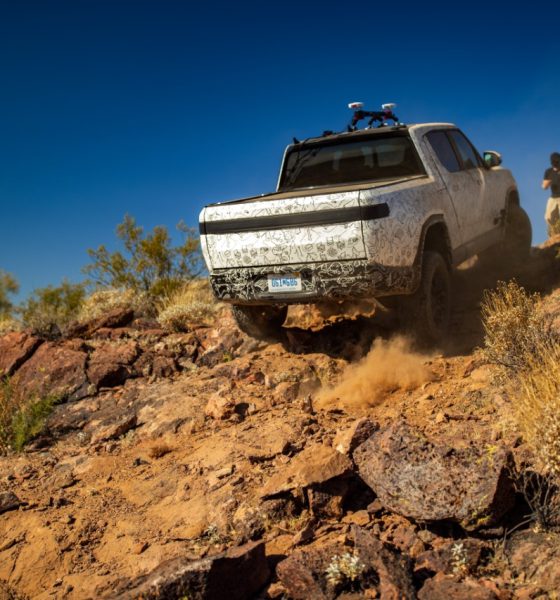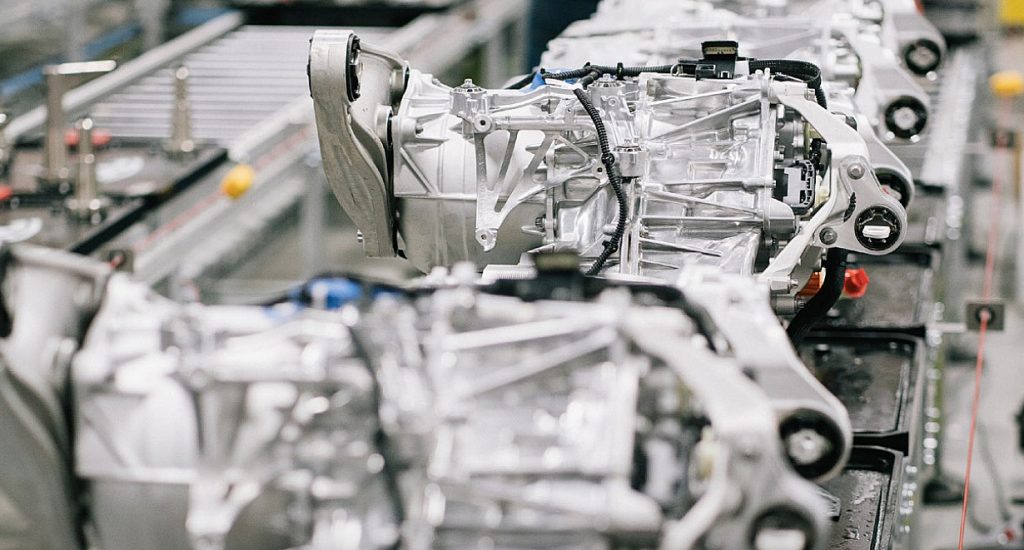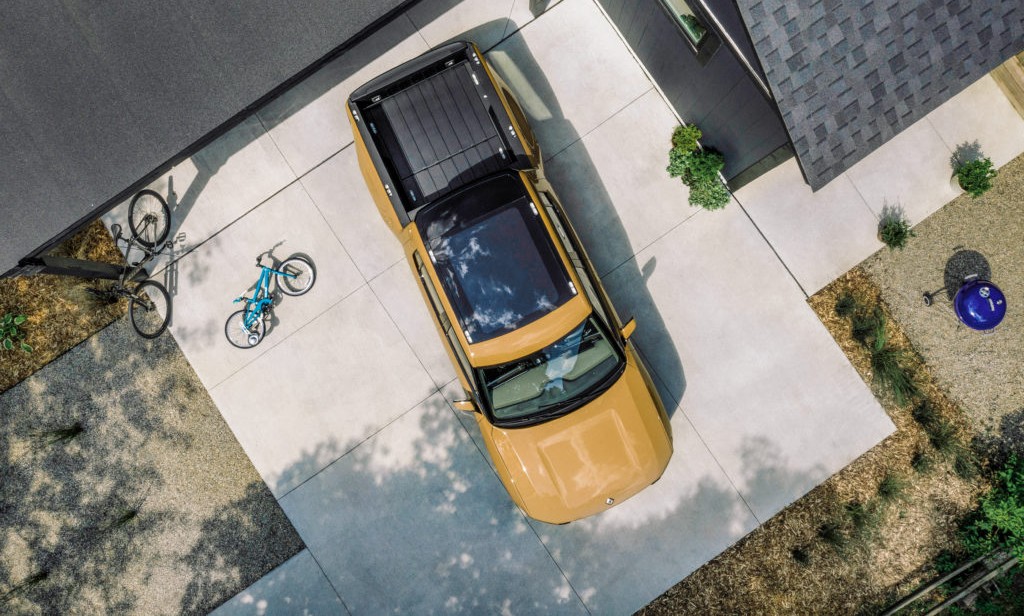

News
Rivian pushes back against Tesla, claims trade secret theft lawsuit spreads FUD
Tesla may have opened its patents to other automakers to help foster the rise of electric cars, but the company still maintains a number of key trade secrets. And as could be seen by Tesla’s legal actions last month, when these trade secrets are allegedly breached, it would not hesitate to file a lawsuit against those responsible, even if the company involved is a fellow electric car maker like Rivian.
In a lawsuit last month, the Elon Musk-led company claimed that Rivian has been engaging in trade secret theft through employees that are being poached from Tesla. The company noted that it has no issue with its former employees coming over to Rivian, but it draws the line when former staff break their NDAs and transfer sensitive trade secrets to the Detroit-based EV maker. So far, Tesla has accused Rivian of acquiring proprietary information related to its recruiting process, its bonus and compensation plan for sales personnel, and manufacturing project management, to name a few.
Rivian has denied any wrongdoing, and it has decided to push back against Tesla as well, asking a judge to dismiss the lawsuit from the Silicon Valley-based electric car maker. Rivian argued that two of the three claims in Tesla’s case actually fail to state sufficient allegations of trade secret theft. Instead, the Detroit-based company argued that Tesla’s suit was primarily intended to damage Rivian’s reputation and hurt its recruiting efforts.

“Tesla did not file this case to defend or protect any legitimate intellectual property rights. Tesla sued in an improper and malicious attempt to slow down Rivian’s momentum and attempt to damage Rivian’s brand. And it sued in an abusive attempt to scare employees thinking about leaving Tesla. While Tesla itself recruits employees from other automotive and technology companies, it cries foul to Rivian, which competes, fairly, for this same automotive and technology talent.
“As is evident from the many defects on the face of its complaint, this lawsuit is driven by these improper aims, and Tesla’s desire to use the judicial system as a prop to deflect attention from Tesla’s own challenges, to foment fear, uncertainty, and doubt about Rivian, and to provide the pretext to disparage Rivian and its own former employees in the press.”
In a filing with the California Superior Court in Santa Clara on August 10, Rivian noted that it has “rigorous policies and procedures to make sure it does not obtain confidential information from other companies when on-boarding employees.” The company also claimed that none of the alleged stolen Tesla trade secrets have been located at Rivian or in any of its operations. As noted in a TechCrunch report, Rivian argued that since Tesla’s claims are based on speculation and not facts, the Elon Musk-led company could not adequately justify its right to sue.

Interestingly enough, Rivian did not stop there. Pushing further, the Detroit-based EV maker’s legal team argued that Tesla did not really file a case to defend or protect its proprietary information. According to Rivian’s lawyers, Tesla’s lawsuit is actually an “improper and malicious attempt to slow” down Rivian’s momentum, damage its brand, and possibly even scare away its employees.
“Unfortunately, maligning Rivian was not Tesla’s only ulterior motive. Rather, it crafted its complaint to achieve second improper purpose — namely to send threatening messages to its own employees: don’t dare leave Tesla. Understanding that the strong public policy favoring employee mobility in California restricts the use of non-compete contracts, Tesla’s complaint seeks to punish four of its former employees for leaving Tesla and joining the Rivian team.,” Rivian’s legal team wrote.
Tesla has so far not released a comment relating to Rivian’s response. Rivian’s response to Tesla could be accessed below.
Tesla Lawsuit Rivian Response by Simon Alvarez on Scribd

Elon Musk
Elon Musk and Tesla AI Director share insights after empty driver seat Robotaxi rides
The executives’ unoccupied tests hint at the rapid progress of Tesla’s unsupervised Robotaxi efforts.

Tesla CEO Elon Musk and AI Director Ashok Elluswamy celebrated Christmas Eve by sharing personal experiences with Robotaxi vehicles that had no safety monitor or occupant in the driver’s seat. Musk described the system’s “perfect driving” around Austin, while Elluswamy posted video from the back seat, calling it “an amazing experience.”
The executives’ unoccupied tests hint at the rapid progress of Tesla’s unsupervised Robotaxi efforts.
Elon and Ashok’s firsthand Robotaxi insights
Prior to Musk and the Tesla AI Director’s posts, sightings of unmanned Teslas navigating public roads were widely shared on social media. One such vehicle was spotted in Austin, Texas, which Elon Musk acknowleged by stating that “Testing is underway with no occupants in the car.”
Based on his Christmas Eve post, Musk seemed to have tested an unmanned Tesla himself. “A Tesla with no safety monitor in the car and me sitting in the passenger seat took me all around Austin on Sunday with perfect driving,” Musk wrote in his post.
Elluswamy responded with a 2-minute video showing himself in the rear of an unmanned Tesla. The video featured the vehicle’s empty front seats, as well as its smooth handling through real-world traffic. He captioned his video with the words, “It’s an amazing experience!”
Towards Unsupervised operations
During an xAI Hackathon earlier this month, Elon Musk mentioned that Tesla owed be removing Safety Monitors from its Robotaxis in Austin in just three weeks. “Unsupervised is pretty much solved at this point. So there will be Tesla Robotaxis operating in Austin with no one in them. Not even anyone in the passenger seat in about three weeks,” he said. Musk echoed similar estimates at the 2025 Annual Shareholder Meeting and the Q3 2025 earnings call.
Considering the insights that were posted Musk and Elluswamy, it does appear that Tesla is working hard towards operating its Robotaxis with no safety monitors. This is quite impressive considering that the service was launched just earlier this year.
Elon Musk
Starlink passes 9 million active customers just weeks after hitting 8 million
The milestone highlights the accelerating growth of Starlink, which has now been adding over 20,000 new users per day.

SpaceX’s Starlink satellite internet service has continued its rapid global expansion, surpassing 9 million active customers just weeks after crossing the 8 million mark.
The milestone highlights the accelerating growth of Starlink, which has now been adding over 20,000 new users per day.
9 million customers
In a post on X, SpaceX stated that Starlink now serves over 9 million active users across 155 countries, territories, and markets. The company reached 8 million customers in early November, meaning it added roughly 1 million subscribers in under seven weeks, or about 21,275 new users on average per day.
“Starlink is connecting more than 9M active customers with high-speed internet across 155 countries, territories, and many other markets,” Starlink wrote in a post on its official X account. SpaceX President Gwynne Shotwell also celebrated the milestone on X. “A huge thank you to all of our customers and congrats to the Starlink team for such an incredible product,” she wrote.
That growth rate reflects both rising demand for broadband in underserved regions and Starlink’s expanding satellite constellation, which now includes more than 9,000 low-Earth-orbit satellites designed to deliver high-speed, low-latency internet worldwide.
Starlink’s momentum
Starlink’s momentum has been building up. SpaceX reported 4.6 million Starlink customers in December 2024, followed by 7 million by August 2025, and 8 million customers in November. Independent data also suggests Starlink usage is rising sharply, with Cloudflare reporting that global web traffic from Starlink users more than doubled in 2025, as noted in an Insider report.
Starlink’s momentum is increasingly tied to SpaceX’s broader financial outlook. Elon Musk has said the satellite network is “by far” the company’s largest revenue driver, and reports suggest SpaceX may be positioning itself for an initial public offering as soon as next year, with valuations estimated as high as $1.5 trillion. Musk has also suggested in the past that Starlink could have its own IPO in the future.
News
NVIDIA Director of Robotics: Tesla FSD v14 is the first AI to pass the “Physical Turing Test”
After testing FSD v14, Fan stated that his experience with FSD felt magical at first, but it soon started to feel like a routine.

NVIDIA Director of Robotics Jim Fan has praised Tesla’s Full Self-Driving (Supervised) v14 as the first AI to pass what he described as a “Physical Turing Test.”
After testing FSD v14, Fan stated that his experience with FSD felt magical at first, but it soon started to feel like a routine. And just like smartphones today, removing it now would “actively hurt.”
Jim Fan’s hands-on FSD v14 impressions
Fan, a leading researcher in embodied AI who is currently solving Physical AI at NVIDIA and spearheading the company’s Project GR00T initiative, noted that he actually was late to the Tesla game. He was, however, one of the first to try out FSD v14.
“I was very late to own a Tesla but among the earliest to try out FSD v14. It’s perhaps the first time I experience an AI that passes the Physical Turing Test: after a long day at work, you press a button, lay back, and couldn’t tell if a neural net or a human drove you home,” Fan wrote in a post on X.
Fan added: “Despite knowing exactly how robot learning works, I still find it magical watching the steering wheel turn by itself. First it feels surreal, next it becomes routine. Then, like the smartphone, taking it away actively hurts. This is how humanity gets rewired and glued to god-like technologies.”
The Physical Turing Test
The original Turing Test was conceived by Alan Turing in 1950, and it was aimed at determining if a machine could exhibit behavior that is equivalent to or indistinguishable from a human. By focusing on text-based conversations, the original Turing Test set a high bar for natural language processing and machine learning.
This test has been passed by today’s large language models. However, the capability to converse in a humanlike manner is a completely different challenge from performing real-world problem-solving or physical interactions. Thus, Fan introduced the Physical Turing Test, which challenges AI systems to demonstrate intelligence through physical actions.
Based on Fan’s comments, Tesla has demonstrated these intelligent physical actions with FSD v14. Elon Musk agreed with the NVIDIA executive, stating in a post on X that with FSD v14, “you can sense the sentience maturing.” Musk also praised Tesla AI, calling it the best “real-world AI” today.








